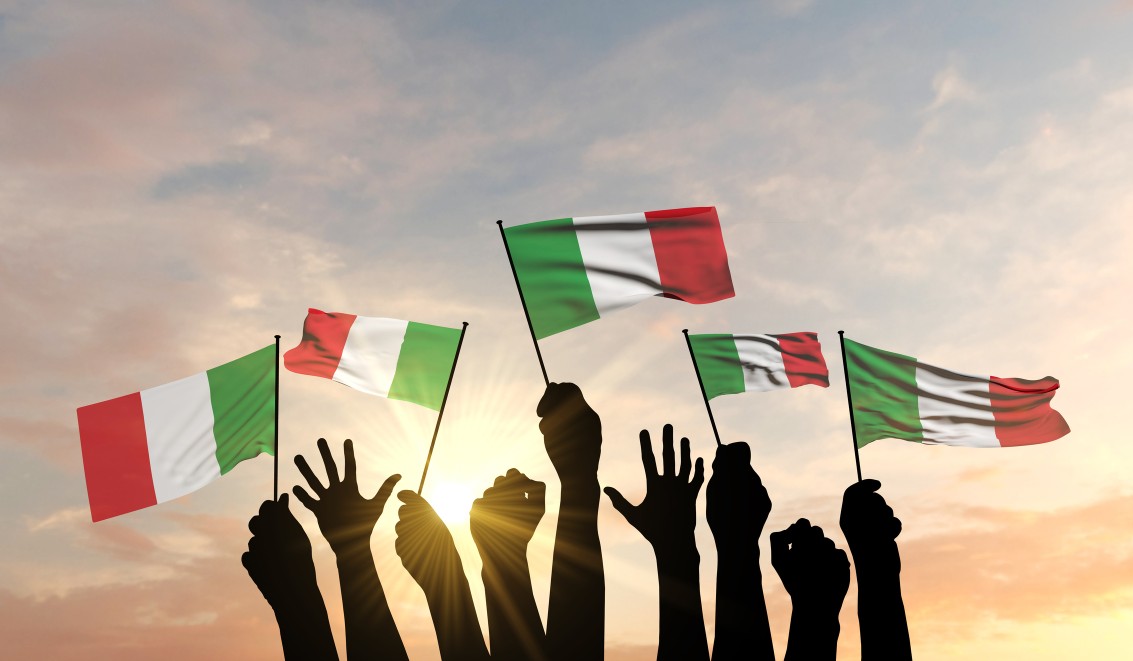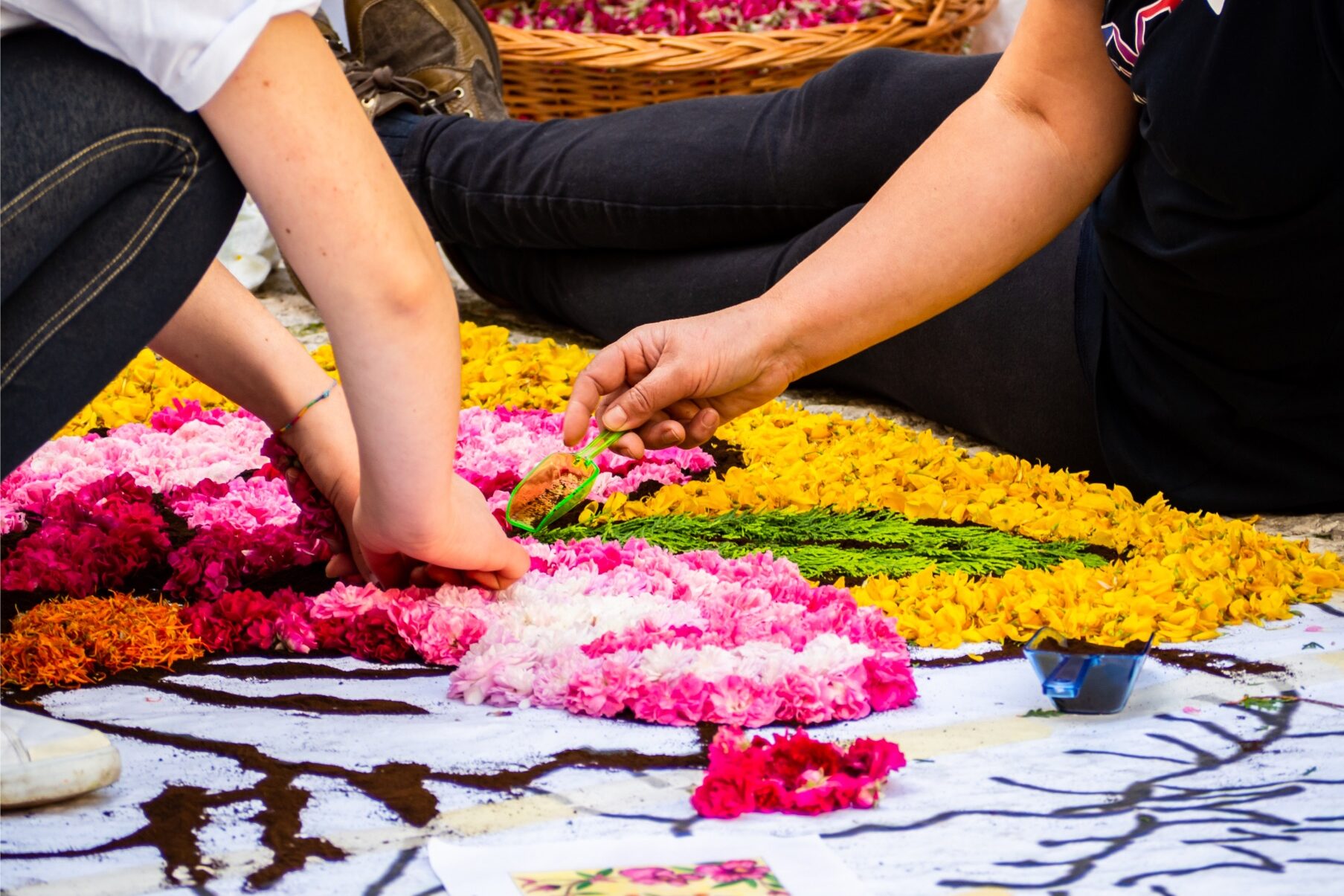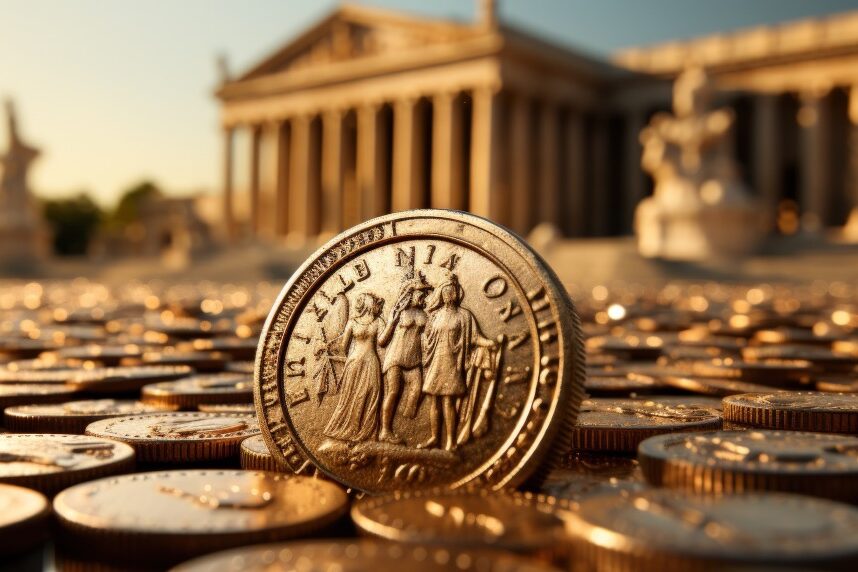We are finally in October, the month of apple picking and pumpkins, of spooks and Halloween. For Italian-Americans, however, it is especially the month dedicated to our heritage and to the contributions the community made to the US throughout its history. Between 1820 and 2000, more than 5 million Italians immigrated to the US, and today, in the 2020s, there are about 17 million Americans of Italian descent, which equals 5.1% of the country’s total population. 17 million, that’s as much as Piedmont, Liguria, Tuscany, Lazio and Umbria put together: if you look at a map, you’ll realize how big this area is for a country the size of Italy. 17 million is over 1/3 of the Belpaese’s total population of 60 million: again, contextualizing numbers helps grasp their full magnitude.
Italian Heritage Month is celebrated in October because of the month’s connection with the first famous Italian with ties with the New World, Cristoforo Colombo. For an Italian child of the 1980s like me, thinking of him as a controversial figure is difficult, but we know well he has become so in recent years, not without causing diatribes and discontent. There is only one thing I’d like to say about it: the US has been the cradle of modern democracy and human rights, even before the French Revolution spread the seminal idea of liberté, égalité, fraternité – freedom, equality, fraternity – throughout the Old Continent. That’s part of its greatness. That every voice has the right to be heard, and that every individual has the right of speaking out is as natural as breathing in America. Yet, historical events should never be interpreted through the lenses of a time different from that when they took place, nor read outside their specific context. So, pain and injustice must be recognized, but not without keeping in mind the context, reality, times and societies where they developed.
But even if we leave out good old Cristoforo, there is so much else to consider when it comes to the role of Italian immigrants and Italian-Americans in building the US. Early Italian migrants contributed to building American cities and making the economy work with their hands and sweat. They bonded with other minorities, contributing to the creation of that incredibly rich, varied and unique mosaic that American culture is. They were there with the African-Americans of New Orleans playing blues, and in New York with the Irish building bridges. Their children grew up bilingual, they became artists and chefs, entrepreneurs and musicians, scientists, doctors, priests and soldiers. Italian-Americans weaved themselves into America’s social and cultural fabric, contributing with their ingenuity and hard work to the greatness of the country.
We shouldn’t forget how Italian-Americans have been giving to their ancestral land, too: how many have been traveling, through the decades, to Italy and the tiny, often forgotten by time, villages their grandparents left in their youth? How important was their trip to them, but also to the community they visited? We often don’t think enough about the meaningful consequences of the choice of “finding our roots:” because if it’s a life-changing moment for us, it is often also for the relatives we find in Italy, and for the people around them. When we land – suitcase, bright smile et all – in our nonni’s old hometown, we rebuild an old bridge, we finally place one more piece in our family history’s jigsaw… but also in that of another person. Our long-lost cousins, aunts and uncles, are all rediscovering their roots, just like we do. They, too, learn more about their past and the reasons why their family, today, is the way it is. It’s a moment of mutual discovery and profound significance because we know well how important family still is in Italy: finding out yours is bigger just means there is more warmth and pride and love going around.
And if it’s true that Italian culture, through the presence of migrants, helped create and develop American culture, let’s not forget about the immense contribution that, indirectly, Italian-Americans gave to Italian culture, too. One example for them all: the great poets of the Beat Generation where Italian-American creativity, with figures like Lawrence Ferlinghetti and Gregory Corso, was seminal, and that meant so much for generation after generation of young Italians, who discovered the importance of the self, of freedom, of poetry through their words. How to forget, then, figures like Renato Dulbecco or Rita Levi Montalcini, just to name two of the most iconic scientists of the 20th century, who made the name of Italy great in their own respective fields but developed so much of their research in the US, a country that welcomed them and nurtured their thirst for knowledge.
So, you see, we do have plenty to celebrate this Italian Heritage Month, both in the US and in Italy: it is a month to honor our culture in all its facets, to appreciate what Italian-American heritage gave to the two countries that make it up. It is a time to take out the tricolore and show it with pride on our front porch, but also to look into our own personal heritage and into Italian-American culture at large. To remember those who made us Italian-Americans by crossing the Atlantic so many years ago, and to remember those who made Italian-American culture the incredible kaleidoscope of experiences it is.
Siamo finalmente a ottobre, il mese della raccolta delle mele e delle zucche, dei fantasmi e di Halloween. Per gli italo-americani, però, è soprattutto il mese dedicato al nostro patrimonio e ai contributi che la comunità ha dato agli Stati Uniti nel corso della sua storia. Tra il 1820 e il 2000, più di 5 milioni di italiani sono immigrati negli Stati Uniti e oggi, nel 2020, sono circa 17 milioni gli americani di origine italiana, pari al 5,1% della popolazione totale del Paese. 17 milioni sono quanto Piemonte, Liguria, Toscana, Lazio e Umbria messe insieme: se si guarda una cartina geografica, ci si rende conto di quanto sia grande quest’area per un Paese delle dimensioni dell’Italia. 17 milioni di persone sono oltre 1/3 dei 60 milioni di abitanti del Belpaese: anche in questo caso, contestualizzare i numeri aiuta a coglierne la portata.
Il Mese dell’Eredità Italiana (Italian Heritage Month) si celebra in ottobre per il legame con il primo famoso italiano legato al Nuovo Mondo, Cristoforo Colombo. Per un italian figlio degli anni Ottanta come me, pensare a lui come a una figura controversa è difficile, ma sappiamo bene che lo è diventato negli ultimi anni, non senza provocare diatribe e malumori. C’è solo una cosa che vorrei dire al riguardo: gli Stati Uniti sono stati la culla della democrazia moderna e dei diritti umani, ancor prima che la Rivoluzione francese diffondesse nel Vecchio Continente l’idea seminale di liberté, égalité, fraternité – libertà, uguaglianza, fraternità -. Questo fa parte della sua grandezza. Che ogni voce abbia il diritto di essere ascoltata e che ogni individuo abbia il diritto di esprimersi, è cosa naturale come respirare in America. Tuttavia, gli eventi storici non dovrebbero mai essere interpretati attraverso le lenti di un tempo diverso da quello in cui si sono svolti, né letti al di fuori del loro contesto specifico. Quindi, il dolore e l’ingiustizia devono essere riconosciuti, ma non senza tenere presente il contesto, la realtà, i tempi e le società in cui si sono sviluppati.
Ma anche se tralasciamo il buon vecchio Cristoforo, c’è molto altro da considerare quando si parla del ruolo degli immigrati italiani e degli italo-americani nella costruzione degli Stati Uniti.
I primi immigrati italiani hanno contribuito a costruire le città americane e a far funzionare l’economia con le loro mani e il loro sudore. Hanno legato con altre minoranze, contribuendo alla creazione di quel mosaico incredibilmente ricco, vario e unico che è la cultura americana. Erano lì con gli afroamericani di New Orleans a suonare il blues e a New York con gli irlandesi a costruire ponti. I loro figli sono cresciuti bilingui, sono diventati artisti e chef, imprenditori e musicisti, scienziati, medici, sacerdoti e soldati. Gli italo-americani si sono inseriti nel tessuto sociale e culturale dell’America, contribuendo con il loro ingegno e il loro duro lavoro alla grandezza del Paese.
Non dobbiamo dimenticare come gli italo-americani abbiano dato anche alla loro terra d’origine: quanti hanno viaggiato, nel corso dei decenni, verso l’Italia e i piccoli villaggi, spesso dimenticati dal tempo, che i loro nonni hanno lasciato in gioventù? Quanto è stato importante il loro viaggio per loro, ma anche per la comunità che hanno visitato? Spesso non pensiamo abbastanza alle conseguenze significative della scelta di “trovare le nostre radici”: se per noi è un momento che cambia la vita, spesso lo è anche per i parenti che troviamo in Italia e per le persone che li circondano. Quando atterriamo – valigia, sorriso smagliante e tutto il resto – nella vecchia città natale della nostra nonnina, ricostruiamo un vecchio ponte, mettiamo finalmente un tassello in più nel puzzle della nostra storia familiare… ma anche in quello di un’altra persona. I nostri cugini, zii e zie persi da tempo stanno anche loro riscoprendo le loro radici, proprio come noi. Anche loro imparano a conoscere meglio il loro passato e le ragioni per cui la loro famiglia, oggi, è così com’è. È un momento di scoperta reciproca e di profondo significato, perché sappiamo bene quanto la famiglia sia ancora importante in Italia: scoprire che la propria è più grande significa solo che c’è più calore, orgoglio e amore in giro.
E se è vero che la cultura italiana, attraverso la presenza degli immigrati, ha contribuito a creare e sviluppare la cultura americana, non dimentichiamo l’immenso contributo che, indirettamente, gli italo-americani hanno dato anche alla cultura italiana.
Un esempio su tutti: i grandi poeti della Beat Generation, dove la creatività italo-americana, con figure come Lawrence Ferlinghetti e Gregory Corso, è stata seminale e ha significato tanto per generazioni di giovani italiani che, attraverso le loro parole, hanno scoperto l’importanza del sé, della libertà, della poesia. Come dimenticare, poi, figure come Renato Dulbecco o Rita Levi Montalcini, solo per citare due degli scienziati più iconici del XX secolo, che hanno reso grande il nome dell’Italia nei rispettivi campi, ma hanno sviluppato gran parte delle loro ricerche negli Stati Uniti, un Paese che li ha accolti e ha alimentato la loro sete di conoscenza.
Quindi, come vedete, abbiamo molto da festeggiare in questo Mese del Patrimonio Italiano, sia negli Stati Uniti che in Italia: è un mese per onorare la nostra cultura in tutte le sue sfaccettature, per apprezzare ciò che il patrimonio italo-americano ha dato ai due Paesi che lo compongono. È un momento per tirare fuori il tricolore e mostrarlo con orgoglio sulla veranda di casa, ma anche per guardare al nostro patrimonio personale e alla cultura italo-americana in generale. Per ricordare coloro che ci hanno reso italo-americani attraversando l’Atlantico tanti anni fa e per ricordare coloro che hanno reso la cultura italo-americana l’incredibile caleidoscopio di esperienze che è.






























